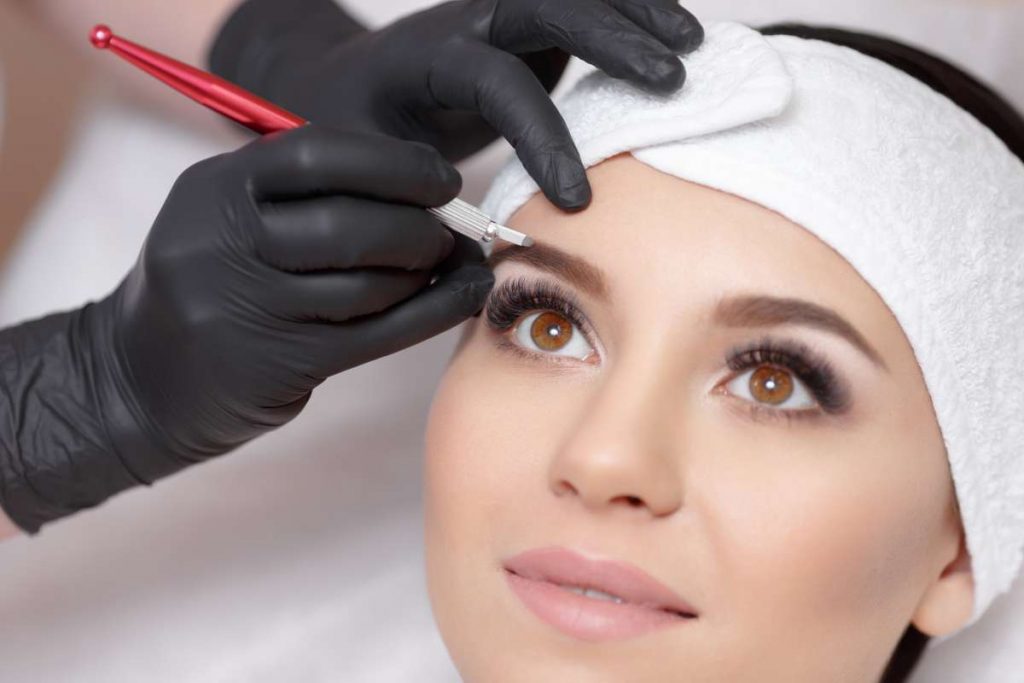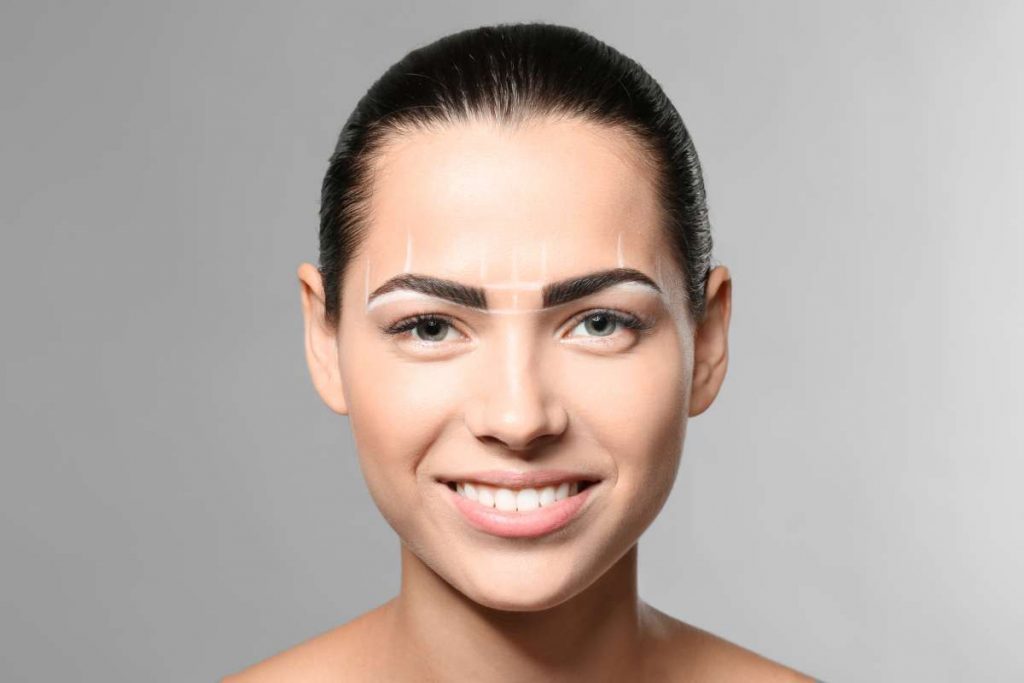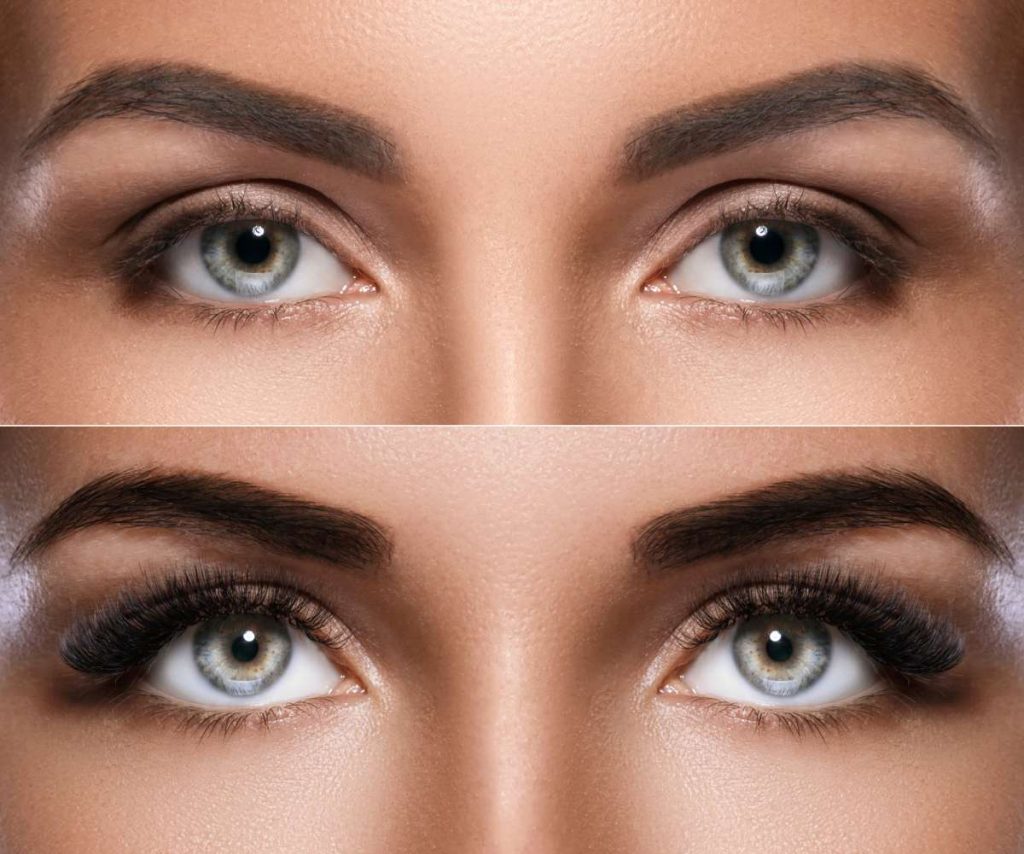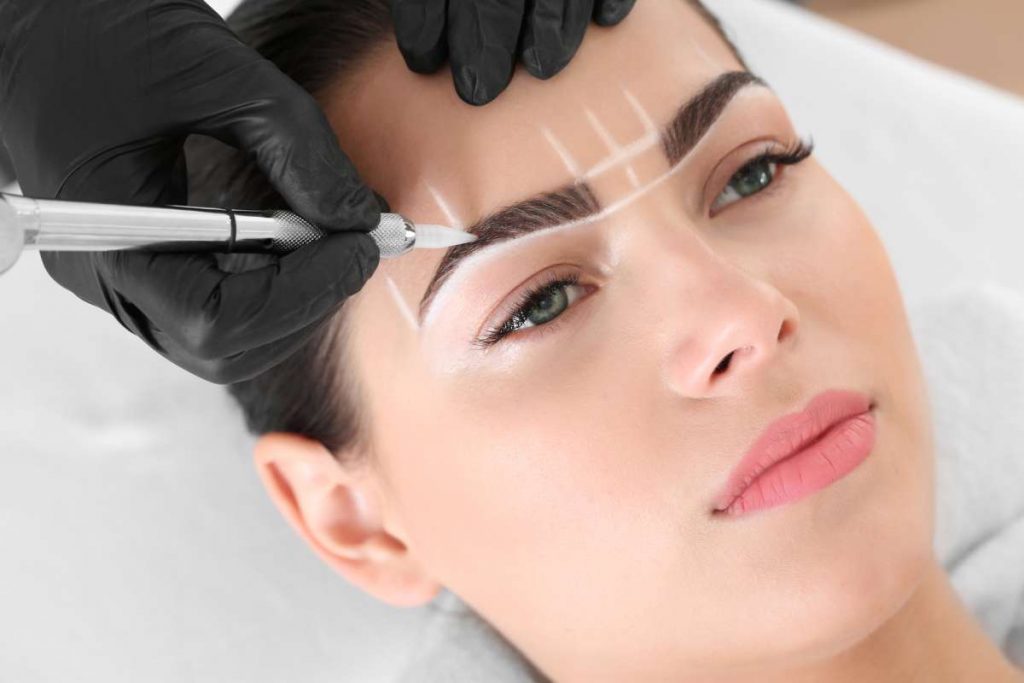If you haven't already started microblading eyebrows before and after Insta-stalking, we commend you. Because if, like us, your eyebrows suffered at the hands of the noughties and Christina Aguilera-esque tadpoles (see out the blunders that you should avoid doing with your eyebrows here), then an infatuation with microblading is unavoidable.
Microblading, the semi-permanent secret to faking larger eyebrows that seem natural, might just be the hassle-free solution to spending hours pencilling in your eyebrows only to get the form so absolutely wrong. Microblading is the secret to faking thicker eyebrows that look natural.
Some people choose to celebrate their wedding anniversary with their spouse. On the other side, I am indicating the passage of one year by growing out my eyebrows. That is to say, it has been exactly one year since the brow magician Piret Aava microbladed my brows, giving me the arches I'd always longed to have. Ever since then, we've been in the blissful period of our relationship.

What Exactly Is Microblading?
Microblading is the process of depositing colour underneath the skin in a manner that is only partially permanent using a very fine blade. The greatest professionals utilise small strokes of varied lengths in order to resemble natural hairs as accurately as possible. I already know what you're thinking: "Oh my gosh!" Does it not feel painful? Each stroke didn't feel like much more than a scratch on my parched skin, if that makes any sense. (In addition to that, you will be numbed in advance.)
The end effect is supposed to look very natural, almost as if you were born with full and shapely brows, and you don't need to use any pomade or pencil to achieve this look. The technique known as microblading is one form of eyebrow architecture. It is all about developing the optimal form for each face - a method that is customised for each individual customer.
The procedure is accurate because of the instrument that is used. This instrument is in the form of a pen, with the nib consisting of a sloped blade that is tipped with ten to twelve tiny needles at the end. These needles do not pierce the skin; rather, they merely scratch the surface in a manner that is analogous to a paper cut. On the epidermal layer of the skin, the needle very carefully implants featherweight strokes with a medical grade pigment, producing exquisite, realistic, and natural hair strokes.
Microblading, also called Eyebrow Embroidery, is permanent makeup, but it's less invasive and semi-permanent than cosmetic eyeliner tattoos. The microblading effect can last up to 2 years or more, depending on the patient's type of skin and their aftercare practise. The operation is performed with a hand instrument that has extremely fine needles, and each 'hair' is delicately etched into the skin. The end result is an appearance that is extremely natural and lifelike. Microblading is a good choice for people who wish to enhance the appearance of their eyebrows or who have little to no eyebrows, brows that are thinning with age, or brows that have been over-tweezed. It can substantially repair or entirely reconstruct missing eyebrow hair. The pigments that are employed are selected to correspond with the intended or natural colour of the brows, and the tone of the skin is also taken into consideration.
The initial Microblading session should take approximately 2.5-3 hours for the full treatment to be completed. During this appointment, the brow technician will shape and style the customer's brows in order to receive approval from the client. After that comes the process of choosing the pigment colour. After ensuring that the customer is happy with the options, we will start the operation.
The customer is required to make a return trip for a follow-up appointment schedule in order to receive any necessary minor touch-ups. The initial session of microblading is followed by a second session that is performed between four and six weeks later. To finish up with this session should take about an hour and a half to two hours.
The second thing that you need to keep in mind after the surgery is that you should avoid getting your eyebrows wet for up to ten days. This includes perspiration produced from exercising out as well as sweat produced during ordinary activities such as showering. Additionally to this, you will be required to keep any makeup away from the brow area and refrain from undergoing any other cosmetic procedures such as facials for around four to six weeks.
After the treatment, you will be provided with a checklist of aftercare instructions to ensure that your brows continue to seem in pristine condition. Don't be alarmed if you wake up the next morning to find that there is some slight redness and some minor swelling. This is entirely normal. You will need to apply a cream that was provided to you at the clinic the day after having microblading done. The cream should be applied to the area that was treated. This is something that is often done every few hours and will continue on into the second day after the microblading procedure has been completed. You can reduce the number of times you apply the cream to only morning and night starting on day three and continuing until day eight.
After your microblading visit, it is strongly advised that you refrain from scheduling anything significant for the next two weeks. This is due to the fact that your eyebrows will go through a stage in which they will flake and peel, which is something that you probably won't want to be reminded of in, for example, your wedding pictures. A dab of Vaseline will relieve any itching that you may be experiencing. Picking at your brows is a bad habit that should be avoided at all costs.
Before you schedule your first consultation, there are a few more important questions you need to ask yourself, such as what shape and colour you want your new eyebrows to be. There is nothing wrong with doing a little bit of pre-planning, even though professionals can assist you decide (and will show you your desired shape before going forwards with the microblading), as there are no drawbacks to doing so. According to Elle, avoiding things that can thin your skin or blood for a week before the surgery is a smart idea. This includes retinol-based skincare products, aspirin, and alcohol, all of which should be avoided.
How Does Getting Your Eyebrows Microbladed Differ From Getting Them Tattooed?
In contrast to tattooing, the microblading procedure is performed more superficially, not in the deeper layers of the skin. This, too, is not permanent, as the colour will go after approximately one year. Since a handheld needle or blade is used in this technique – there is no electrical device that permeates deeply into the skin – the hair strokes are noticeably more natural and finer than those produced by any tattoo. Because of this, rather than the buzzing sound that is produced by a tattoo gun when it thoroughly pierces the skin, there is more of a scratching sound.

How Long Does It Take for the Microblading to Heal?
The results of microblading can last anywhere from 12 to 18 months, but the durability of the pigment will depend on the type of skin you have. The results of having microblading done might last anywhere from 18 months to 3 years. You will need to return to your practitioner for a touch-up application as soon as the pigment that was applied during the process starts to noticeably fade away. Depending on your skin type and the overall appearance that you want to achieve, you may need touch-ups every six months or every year.
The process of having touch-ups with microblading is comparable to getting root touch-ups for your hair. If you go in as soon as you see that your microblading is beginning to fade, you will only need to have the colour filled in. However, if you wait for a period of time that is longer than what is recommended by your specialist, it is possible that you may need to have the entire microblading treatment redone on both of your eyebrows. This procedure is time-consuming and more expensive than a touch-up programme.
The results of microblading can be expected to endure anywhere from one to three years, as stated by the industry experts. "There are a lot of elements that contribute, like sun exposure and your skincare routine," brow magician Piret Aava told InStyle. "If you take care of your brows, it will stay longer, but if you don't, then you'll be back to square one." It is recommended by professionals in the beauty industry that you spend as little time as possible in the sun and steer clear of harsh exfoliants like glycolic acid and retinol if you want your beautiful brows to last as long as possible. These products have the ability to physically remove the top layer of skin, which in turn removes the pigmentation.
It is difficult to make a generalisation about this topic. The majority of industry experts agree that your fake hairs will be visible for up to three years, but as time passes, they will lose their "crispness," and as a result, you will need to get them touched up anywhere from seven months to a year after the initial procedure. According to Piret, "there are a lot of different elements that contribute, including sun exposure and how you take care of your skin." "For instance, if you are a huge exfoliator, it will make them fade faster."
For one, I am a big fan of using exfoliators. Having said that, I didn't begin to detect any thinning until almost 10 months following the initial treatment. I intend to stop in to see Piret once a year or so for a touch up. Because the pigments used in microblading are not inserted into the skin to the same depth as those used in regular eyebrow tattooing, the area will gradually fade away on its own over time. The effects of microblading normally last between one to three years, but this might vary greatly based on the patient's age as well as their type of skin (dry, normal or oily). Using Glycolic Acid products will help tanned skin fade and resurface faster. This is because the pigment will fade more quickly in patients whose skincare routine includes these ingredients. The amount of colour that is retained by the skin will vary from person to person. It is recommended to get a touch up done once every 12 to 18 months in order to keep the brows appearing as fresh as possible. Clients have the option of letting the microbladed region fade naturally over time; however, they should be aware that a very faint shadow may persist.
What Is The Durability Of Microblading On Oily Skin?
You can still be a candidate for the microblading procedure even if you have oily skin. On the other hand, the effects may not be as long-lasting as they would be on other skin types. If your skin produces a lot of sebum, often known as oil, this might make it more difficult for colour to stick to your skin and remain there. Have a conversation with your aesthetician about any worries you have regarding the type of skin you have and how long you should anticipate the effects of your treatment to persist.
People who have normal skin can keep using the same bottle of moisturiser for up to 18 months, however those who have oily skin will need to reapply it after about 12 months on average. If you do not keep up with touch-ups around every 18 months, your eyebrows will disappear completely over time. Because the pigments used do not cause scarring or discoloration, you would not be able to tell if you allowed them to wear out on their own.

Do You Need The Touch-Up Session?
Yes! As a result of the fact that everyone recovers differently, it is necessary to schedule a touch-up session after four to six weeks has passed. It is possible that certain areas will not pick up during the initial session and will require a subsequent session to do so. There is a possibility that the pigment colour will need to be altered, and additional strokes and brow thickness can be added. Because oils have a tendency to lighten pigment, those who have oily skin typically need a darker shade during the touch-up session. Most importantly, during your annual touch-up appointment, we will shape and define your brows to ensure that they continue to look great and keep their colour for the entire year.
After the surgery, your brows will first appear to be much darker than they should be. In two weeks, the colour will alter considerably. If you look after your brows and make sure to follow the aftercare recommendations, you will be able to enjoy the benefits of microblading for many years to come. Put away your eyebrow pencils, because technology is here to stay.
Following a period of six to eight weeks comes the topping-off session. At this point, I can evaluate the first steps, add any more strokes, and, if desired, add a darker hue to the mix. Because the pigment colour has not yet fully settled into the skin, touch-up treatments should not be done any sooner than four weeks after the initial microblading session. Because the damaged tissue needs some time to fully recover, this is done, most critically, to avoid the formation of scar tissue.
Are Microbladed Eyebrows Reversible/Removable?
Yes, the pigment leaves no scarring or discoloration, and I can remove microbladed brows with salt/saline. During the first 7-10 days of recovery, scabs might form and flake off, making brows up to 40% darker. Ladies may leave the studio and be worried two days later that their brows are too black. This is typical. After 7-10 days, complete colouring appears. Individuals should not choose cosmetic operations casually. When making judgments, we urge clients undertake comprehend the technique, compare artists' work and portfolios study everything. Before the operation, our brow professionals will shape and style the client's eyebrows. Our faces are never exactly symmetrical, despite our best efforts. Touch-ups restore uneven appearance. Touch-ups can correct pigment deterioration and colour. Without touch-ups, microbladed brows will fade.
Conclusion
The technique known as microblading is a semi-permanent method that can be used to create the appearance of having fuller eyebrows. The procedure entails using a very fine blade to deposit colour underneath the skin in a manner that is only partially permanent so as to achieve the desired effect. The finished product should have a very natural appearance, almost as if your brows were naturally thick and well-defined from birth. Microblading, which is also known as Eyebrow Embroidery, is a form of permanent makeup; however, in comparison to cosmetic eyeliner tattoos, it is less invasive and only semi-permanent. The impact may remain for up to two years or perhaps longer, depending on the type of skin the patient has.
It is able to significantly mend or completely reconstruct eyebrow hair that has been lost. It is strongly recommended that you put off planning anything substantial for the next two weeks in order to follow this piece of advice. This is because your eyebrows will go through a stage in which they will flake and peel as they mature. This is completely normal. It's a good idea to steer clear of anything that can make your skin or blood thinner in the week leading up to your procedure. The results of microblading can be expected to last anywhere from 12 to 18 months, but the pigment's longevity will be determined by the type of skin that you have.
As soon as the pigment that was applied during the process begins to lose its intensity, you will need to make another appointment with your practitioner in order to have a touch-up application performed. The effects of microblading often last anywhere from one to three years, depending not only on the age of the patient but also the type of skin they have (dry, normal or oily). The use of products containing glycolic acid will help tanned skin fade and resurface more quickly. The amount of pigment that an individual's skin is able to hold onto varies greatly from person to person. Immediately following surgery, your brows will have the appearance of being significantly darker than they should be.
There is a possibility that the pigment colour will need to be adjusted, and it is possible to add extra strokes as well as thickness to the brow. During the touch-up session, people who have oily skin typically need a darker shade of foundation. After the first seven to ten days of the healing process, scabs may form and flake off, making the brows appear up to forty percent darker. Touch-ups can rectify pigment degeneration and colouring; microbladed brows will fade if they are not touched up. Cosmetic surgery is not something that should be chosen lightly by individuals.
Frequently Asked Questions About Microblading
When done correctly by a trained professional, microblading should last up to a year, as Diana Menendez, the owner of threading and microblading studio Accentuated in Scottsdale, Arizona, explains. After a year you will most likely need regular, yearly touch-ups to maintain the original results.
Microblading could cause: Infection. If your technician uses dirty water or equipment, they can spread bacteria like staphylococcus (staph). They could also spread viruses like HIV, hepatitis, or herpes.
Those with very oily skin and large pores are not good candidates for Microblading. You may have to choose a different technique. Individuals over 55 years of age. From our experience, mature skin is not an ideal candidate for Microblading.
- Ineligible Without Exception
- Individuals under 18 years of age.
- Women who are pregnant or nursing.
- Individuals with Pacemaker or major heart problems.
- Individuals with viral infections and/or diseases.
- Individuals with Lupus.
- Individuals who have undergone Organ Transplant.
So, is microblading worth it? The short answer to this question is yes, eyebrow microblading is definitely worth it. Especially considering the amount of talent and experience semi-permanent makeup artists have today, there's no going wrong when getting eyebrows microbladed. You'll be surprised by the results.

